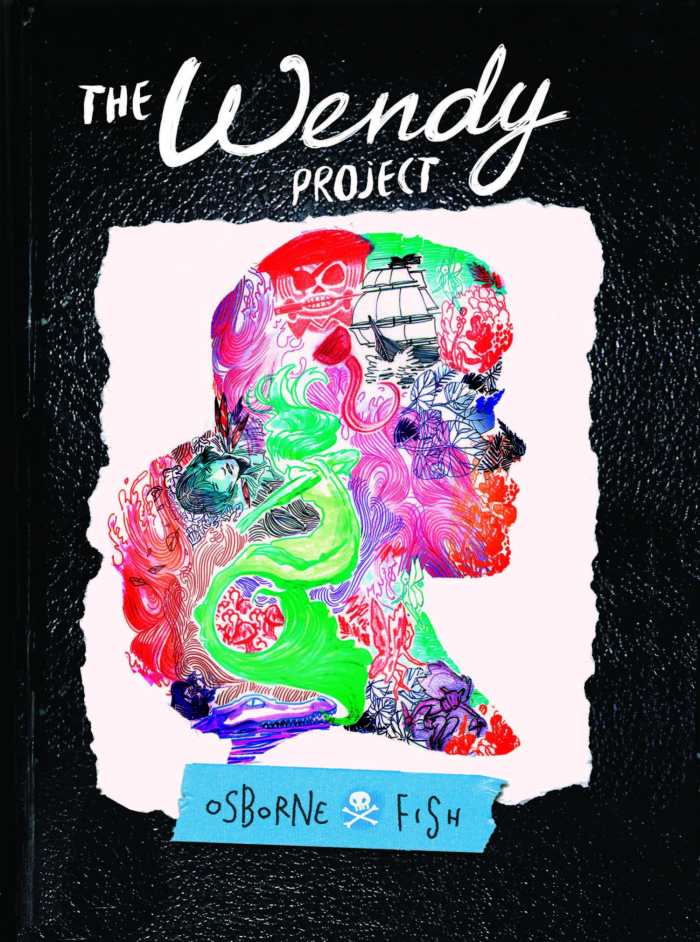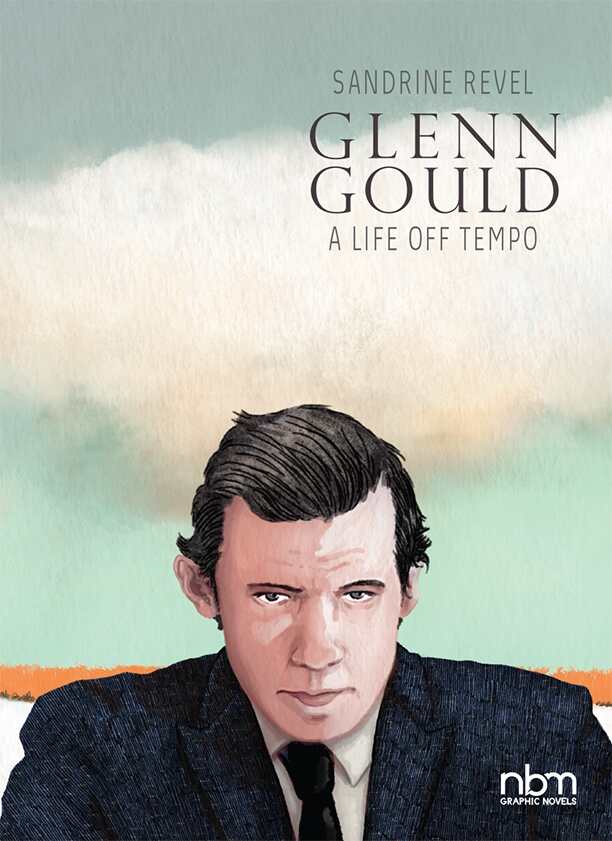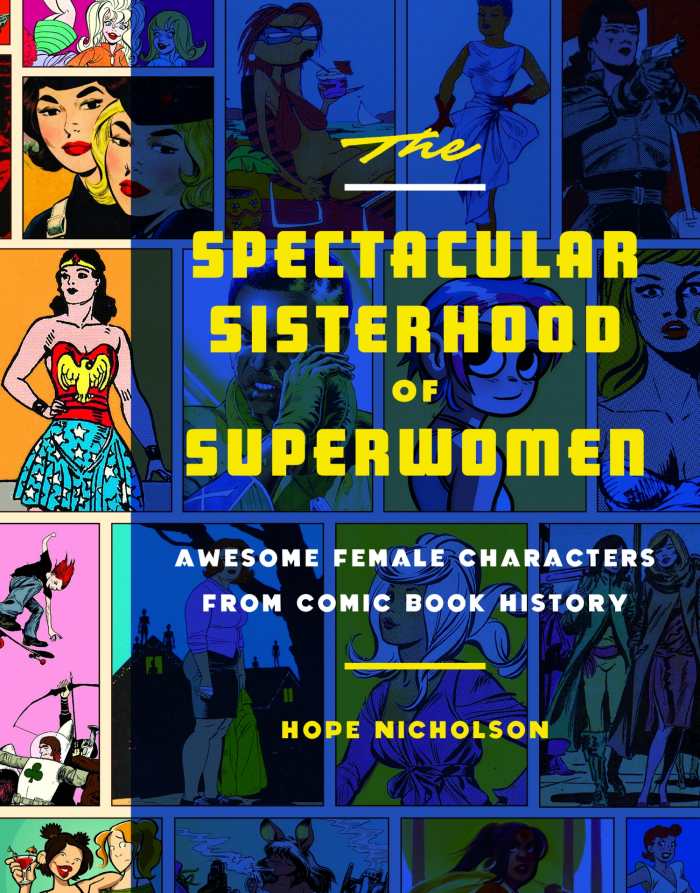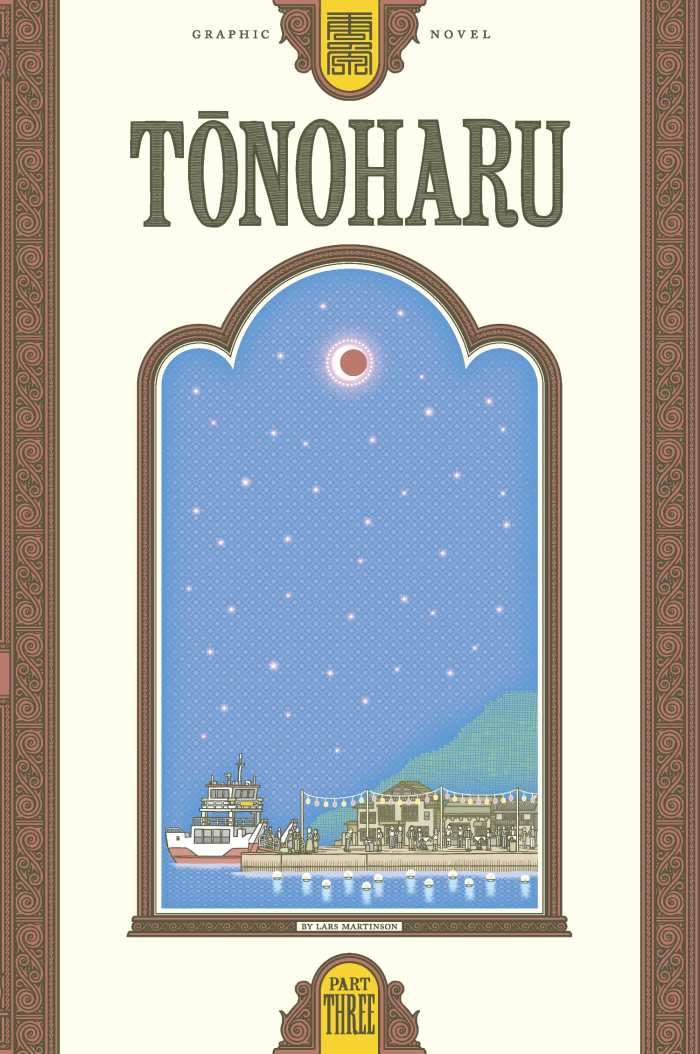How a Story is Told
Graphic Novel Reviews from March/April
The way a story is told is important. Sometimes, the narrator of an audiobook has a voice we can’t stand to listen to, or a novel really should have been written as a short story. And sometimes, a graphic novel is the best way to capture the essence of a story. Each of these books is unique in its subject matter, but a graphic novel was just the right form to tell their tale in. Reviewed in our upcoming March/April edition, these six graphic novels are in the perfect format.
The Wendy Project

Melissa Jane Osborne
Veronica Fish, illustrator
Super Genius
Softcover $12.99 (96pp)
978-1-62991-769-6
Buy: Local Bookstore (Bookshop), Amazon
A girl whose brother is killed in a car accident finds herself torn between reality and fantasy, in Melissa Jane Osborne and Veronica Fish’s The Wendy Project, a beautiful and touching graphic novel.
After the accident, Wendy, the story’s sixteen-year-old protagonist, recalls seeing a boy looking much like Peter Pan flying away with her brother Michael. With Michael’s body unrecovered from the lake at the scene of the accident, Wendy wonders if it what she saw could have been real as she notices more and more “Neverland” influences—a police officer resembles Captain Hook, shadows seem to move independently of their owners, and a boy at school might be Peter Pan himself.
Quotations from J. M. Barrie are effectively placed at key points in the story, including this one, as Wendy chases a phantom she believes could be her brother: “The difference between HIM HER and the other BOYS GIRLS at such a time [was] that they knew it was MAKE-BELIEVE, while to HIM HER make-believe and TRUE were the EXACT SAME thing.”
Fish’s illustrations are a model of clear pictorial storytelling while also conveying the emotions that run thick throughout the book. Spot applications of vibrant color offset the mostly black-and-white images, as a recurring motif whenever the “Neverland” influence is present.
Wonderful in every sense of the word, The Wendy Project tells a moving story about not only the loss of a family member but also the loss of innocence as children become adults.
PETER DABBENE (February 21, 2017)
Glenn Gould
A Life Off Tempo

Sandrine Revel
NBM Publishing
Hardcover $25.99 (136pp)
978-1-68112-065-2
Buy: Amazon
Glenn Gould was a fascinating figure—mysterious and eccentric, yet undeniably gifted, and connected to the music he played in a way unlike most musicians. Sandrine Revel’s challenge, in her book Glenn Gould: A Life Off Tempo, is to communicate what isn’t easily expressed—music itself, of course, but also the deep-seated psychological quirks that made Gould so exciting to watch perform, yet that troubled him so deeply.
Revel manages to pull it off by using several series of small close-ups focused on Gould’s face. For example, she conveys the ecstasy the pianist felt when performing his favorite classical works. While Revel’s illustrations are excellent in a traditional sense, the storytelling, perhaps in a nod to Gould’s offbeat mind, requires close attention. Revel often jumps to and from various time periods and narrators, with flashbacks to Gould’s childhood suddenly giving way to adult musings, amid symbolism that’s sometimes easily discerned (when Gould’s treasured piano breaks, Revel shows him falling and breaking into pieces on stage) and sometimes harder to decipher (an opening dream sequence of Gould playing an invisible piano while wearing a dog mask).
As a welcome bonus, the book includes a playlist of the Gould performances Revel listened to while working on the book, as well as a select discography. Glenn Gould: A Life Off Tempo adds a new dimension for those already familiar with the man, and for newcomers, a perfect introduction.
PETER DABBENE (February 21, 2017)
Our Cats Are More Famous Than Us
A Johnny Wander Collection

Ananth Hirsh
Yuko Ota, illustrator
Oni Press
Hardcover $39.99 (416pp)
978-1-62010-383-8
Buy: Local Bookstore (Bookshop), Amazon
Ananth Hirsh and Yuko Ota have created a cottage industry of cute, with the publication of Lucky Penny in spring 2016, a variety of online projects at their site www.johnnywander.com, and now a thick collection of their autobiographical comics, Our Cats Are More Famous Than Us.
Relating tales of post-college life, including friends, family, cats, landlords, and strange everyday experiences, these comics—most one page apiece—contain a plethora of humorous, relatable, and yes, cute observations. Were this a YouTube channel, there might be many, mostly failed contenders for such entertaining self-exposure; but in illustrated form, what stands out as unique, aside from a well-developed sense of humor, is that Hirsh and Ota also boast undeniable talent. Pacing, facial expressions, and general creativity are all noteworthy, and the end result is a collection that gains momentum slowly, but never falters.
An example of the book’s success is the occasionally appearing “hourly comics” format, in which a number of small panels detail the passage of time in a single day, via hourly checkpoints. It’s a technique which, in the wrong hands, could quickly become tiresome—but Hirsh and Ota manage to keep it fun, while using the template to showcase the often-random joys and frustrations of daily life.
The volume ends with a satisfying conclusion and the hint of a new chapter about to begin in the lives of two gifted graphic storytellers.
PETER DABBENE (February 21, 2017)
The Spectacular Sisterhood of Superwomen
Awesome Female Characters from Comic Book History

Hope Nicholson
Quirk Books
Hardcover $24.95 (240pp)
978-1-59474-948-3
Buy: Amazon
The characterizations of women in comics have come a long way since the 1930s, which is where Hope Nicholson begins her decade-by-decade review of famous, representative, quirky, or otherwise notable heroines in her thoroughly enjoyable book The Spectacular Sisterhood of Superwomen.
Nearly a century is a long time to cover, so Nicholson doesn’t spend too long analyzing any one character—even Wonder Woman, Supergirl, and Batgirl, despite being named “Hero of the Decade” of the 1940s, ’50s, and ‘60s, respectively, garner only a couple of pages of commentary apiece. It’s a good choice, allowing Nicholson to cover a greater number of lesser-known characters, which she does in a breezy, conversational style (ripe with parenthetical notes and explanations, not to mention reprinted art), that’s immensely fun to read.
Though better-known and more historically significant characters are also discussed, unearthed here are many characters who might otherwise fade into obscurity, some having appeared in a total of only one or two issues: Nurse Helen Grant, Zelda the Witch, Vanity, and American Woman are just some of the names that will likely prove unfamiliar to even longtime comics fans. Fashions and fads are all represented in their respective decades, but the overall trend, easily seen from Nicholson’s twenty-first-century selections, is toward more diversity in comics characters, probably a happy analogue to an increase in female creators.
PETER DABBENE (February 13, 2017)
A Guided Tour of Hell

Samuel Bercholz
Pema Namdol Thaye, illustrator
Shambhala
Hardcover $24.95 (160pp)
978-1-61180-142-2
Buy: Local Bookstore (Bookshop), Amazon
Hell is a harrowing concept for any believer, and Samuel Bercholz describes his own afterlife experiences in his illustrated memoir, A Guided Tour of Hell.
Bercholz devotes a few pages to telling of his introduction to Buddhism, before describing his first near-death experience while suffering from a case of typhus. Thirty-five years later, he suffers a heart attack and, after surgery, falls into the tour of hell that he vividly describes.
“A wordless message was somehow conveyed to me: This is the domain of hell. You have been brought here as a guest, to witness and understand the suffering of beings of all kinds—particularly the suffering of human beings.”
Bercholz’s vision of hell is clearly seen through the lens of his Buddhist faith. Accompanied by the Buddha of Hell, he tours hells hot and cold, overcrowded and desolate alike, until finally his human body recovers and he awakes. The remainder of the book places Bercholz’s experience into the larger context of Buddhist philosophy.
A Guided Tour of Hell is, strictly speaking, a prose memoir, though Thaye’s images and paintings are an integral component of the book. Some are stunning in their ability to visualize Bercholz’s descriptions, and it’s hard to imagine fully grasping his experience without their aid. Whether it’s taken as literal truth or a moral allegory, A Guided Tour of Hell offers a fascinating glimpse into one man’s unique experience.
PETER DABBENE (February 21, 2017)
Tonoharu

Lars Martinson
Top Shelf Productions
Hardcover $24.95 (208pp)
978-0-9801023-1-4
Buy: Amazon
Lars Martinson closes his stark tale about isolation and the foreign experience in Tonoharu: Part Three. Tonoharu, the Japanese town where central character Dan Wells teaches English, is the setting for Dan and his supporting cast of characters, as they grasp at connections, foiled not just by language and custom, but by their own desires and uncertainty.
The plot is driven by Dan’s attempts to piece together a mystery and by the question of whether or not he will renew his contract to stay in Japan. But fundamentally, Tonoharu is about relationships. Martinson’s writing gives a vivid sense of the loneliness of being an expatriate, through small, and often humorous details that show the difficulty of dual-language communication.
Martinson is masterful at setting the mood with dialogue, but the true star here is his artwork. Though people are somewhat cartoonish in appearance, they’re consistent and proportional, making the choice highly effective—while the landscapes, interiors, and backgrounds are drawn with intricate, detailed textures and crosshatching that would make Robert Crumb envious.
Several appendices and an epilogue reveal the supporting characters’ secrets, filling in gaps and tying up loose ends, even as they preserve the central themes of Tonoharu. Martinson’s work is contemplative and sublime, and his book lingers in memory well after its end. It is a transformative experience, even (or perhaps especially) for those who’ve never set foot in Japan.
PETER DABBENE (February 21, 2017)
Peter Dabbene

